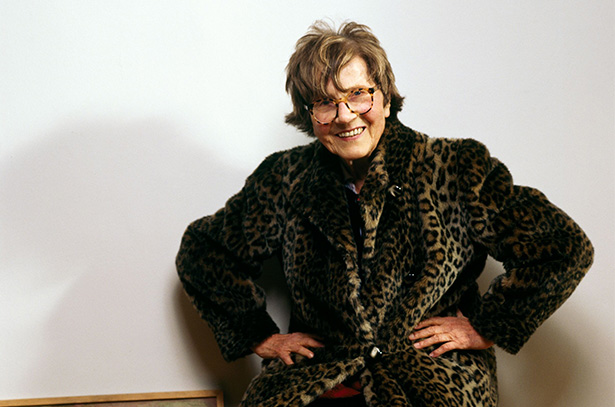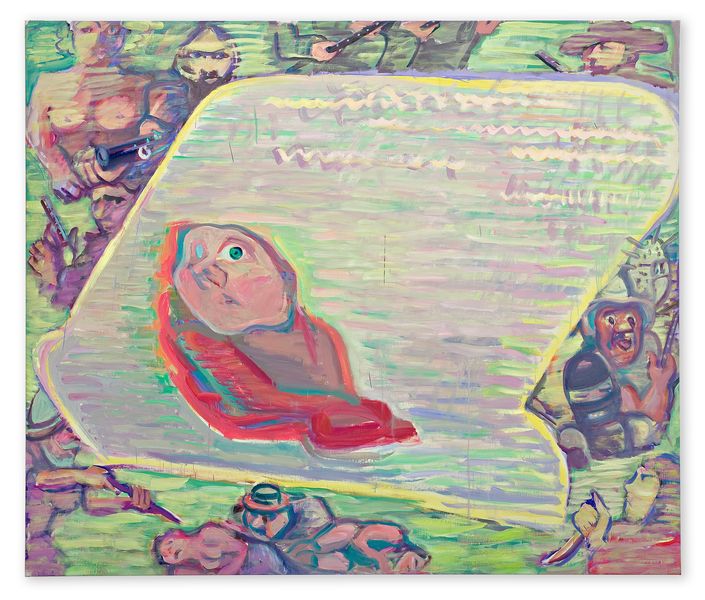
Maria Lassnig
A Painting Survey, 1950 – 2007
17 September - 31 December 2016
Los Angeles
Beginning 16 September 2016, Hauser Wirth & Schimmel is pleased to present ‘Maria Lassnig. A Painting Survey, 1950 – 2007,’ the first Los Angeles solo exhibition for the acclaimed late Austrian artist. Spanning work made from the 1950s to the end of the artist’s life, this survey traces Lassnig’s evolution from early experiments with abstraction to a richly inventive figuration and the refinement of her ‘body awareness’ paintings, in which she captured physical sensation as felt from within. Lassnig devoted much of her career to recording her physiological states through a direct and unflinching style, believing that ‘truth resides in the emotions produced within the physical shell.’ Pursuing her extraordinary science of the self, Lassnig rendered an oeuvre that has influenced such important younger artists as Martin Kippenberger and Paul McCarthy.
‘Maria Lassnig. A Painting Survey, 1950 – 2007’ will be on view through 31 December 2016. The exhibition has been organized by Peter Pakesch, Chairman of the Maria Lassnig Foundation, Vienna, and Paul Schimmel, Vice-President and Partner, Hauser Wirth & Schimmel. A major international retrospective of works by Lassnig is currently touring Tate Liverpool, Liverpool, England; Kunsten Museum of Modern Art Aalborg, Aalborg, Denmark; Museum Folkwang, Essen, Germany; and the National Gallery, Prague, Czech Republic, through 2018. A 2017 retrospective of Lassnig’s works on paper will travel from the Albertina, Vienna, Austria to Kunstmuseum Basel, Basel, Switzerland.
‘Maria Lassnig. A Painting Survey, 1950 – 2007’ reveals the ways in which the artist drew from and challenged conventions of abstraction to create a singular figuration. Organized chronologically, the exhibition unfolds over five rooms, beginning with the early 1950s. In such rarely seen oil paintings as the 1953 works ‘Flächenteilung Schwarz-Weiß-Grau 2’ and ‘Flächenteilung Schwarz-Weiß-Grau 1,’ viewers can see Lassnig exploring an abstract visual language bolstered by her immersion in French avant-garde circles and her relationships with such writers such as Paul Celan, Friederike Mayröcker, and Oswald Wiener.
By the late 1950s and early 1960s, Lassnig’s work had turned to gestural, field-like abstract landscapes, exemplified by ‘Tachismus 4’ (1958/1959) and ‘Untitled’ (ca. 1960), in which her earlier subdued palette is replaced by intense, warm color. At the same time, an innovative figuration, expressive and painterly, is beginning to emerge. In such canvases as ‘Selbstporträt als Tier’ (1963) and ‘Balancing Myself’ (1965), Lassnig trains her eye upon herself, offering up works that are caricatured, allegorical, and psychologically penetrating. Her intense color palette in this period, with hot pinks and florid purples and reds, is deliberately unnatural, provoking a reevalutation of the figure-ground relationship.
In the 1970s, Lassnig turns to a subtler, cooler, but equally surreal palette to portray recognizable nude figures, including the two self-portraits on view ‘Dreifaches Selbstporträt/New Self’ (1972) and ‘Selbstportait mit Weinglas’ (1975). These depictions of solitude give way in the 1980s to figures barely recognizable as human, but whose raw vulnerability is instantly legible as Lassnig’s. By the end of the decade, the artist’s ongoing exploration of figure-ground tensions is expressed in such works as ‘Große Flächenteilung/Spiegel’ (1989) and ‘Unterbrechung’ (1989), in which simple shapes are painted over horizontal swaths of intense and even acrid contrasting color fields.
The last room of the exhibition presents works from 1990s and 2000s. Here Lassnig has moved from an agitated, intense palette to cool, vivid, and complementary hues. Fragmented figures in some works – ‘Generationsfußtritt/Generationsprobleme II’ (1998/99) and ‘Be-Ziehungen VI’ (1994), for example – seem to suggest the artist confronting questions of knowledge, language, and generational conflict. Other canvases on view, painted in this final period of Lassnig’s life, reflect tender and personal moments – a figure kissing a teddy bear, a self-portrait blowing a bubble.
Installation views


Related Content
About the Artist

Maria Lassnig
Born in Carinthia in Southern Austria in 1919, Maria Lassnig’s (1919 – 2014) work is based on the observation of the physical presence of the body and what she termed ‘body awareness’, or ‘Körpergefühl’ in German. She studied at the Academy of Fine Arts in Vienna in the midst of the Second World War. Then, in post-war Europe, she quickly moved away from the state-approved academic realism in which she was trained, looking to Austria’s own avant-garde past, such as the coloration of Oskar Kokoschka and Egon Schiele’s expressionist treatment of figuration.
Her early years were marked by experiences with various ‘isms’, including artistic currents in surrealism and automatism from the late 1940s, followed by ‘art informel’ and post-cubism in the 1950s. After moving to Paris in 1960, an innovative figuration, expressive and painterly, was beginning to emerge. In the next few years, she developed narrative paintings with one or more figures, at times borrowing from technoid forms of science fiction set in absurdly caricatured scenes. Animal-like, monstrous self-portraits emerged alongside this group of works.
In 1968, Lassnig moved to New York where her artistic work once again switched direction—she turned to external realism and painted portraits, nudes and still lifes, at times combining these with her ‘body awareness’ self-portraits. Many of her paintings, drawings and watercolors were devoted to recording her physiological states through a direct and unflinching style. Utilizing contrasting colors such as greens, pinks and blues, as well as strong body shapes to give her paintings a powerful, even drastic impact, Lassnig looked to herself, a female artist in a predominantly male world, as her primary subject.
Of her artistic process, Lassnig has said: ‘I step in front of the canvas naked, as it were. I have no set purpose, plan, model or photography. I let things happen. But I do have a starting-point, which has come from my realization that the only true reality are my feelings, played out within the confines of my body. They are physiological sensations: a feeling of pressure when I sit or lie down, feelings of tension and senses of spatial extent. These things are quite hard to depict.’ Her famed portraits and self-portraits are often treated with a playful irony, even in her depictions of the aging body and psychological turmoil.
In 1980, Lassnig was awarded a professorship—with a focus on painting and animation film—at the University of Applied Arts in Vienna. As a result, her self-portraits repeatedly explored issues of overload and enforced estrangement. She then began dealing more extensively with mythological contents, with nature and ‘rural life,’ and continued her exploration of figure-ground tensions. From the late 1990s, Lassnig turned to the great existential themes with her so-called Drastic Pictures, such as the relationship between the sexes and generations, unchosen lifestyles, as well as oppression, destruction, impermanence, and death.
Portrait: Maria Lassnig in her studio, Vienna, 2007 © Monopol/Elfie Semotan 2007
Current Exhibitions
1 / 12























